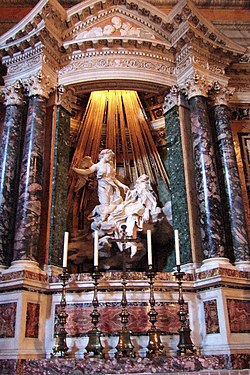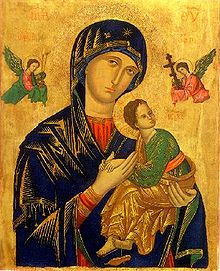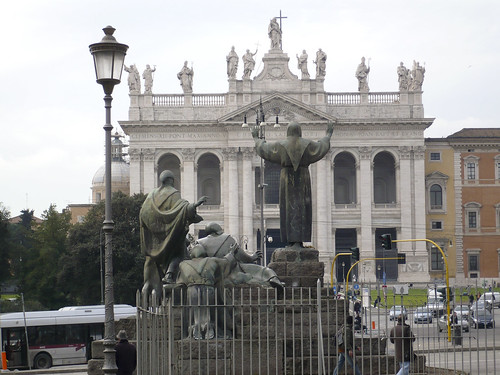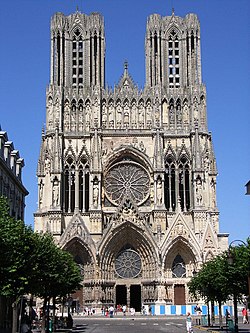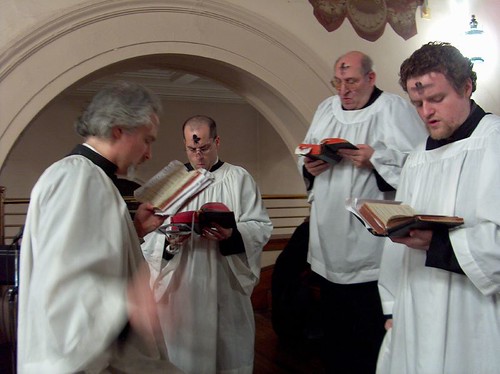This is truly scattered thoughts over a couple of days in between classes...good luck
On the one hand, you get the very nice and charitable crazy liberal priest who is 'fun' to be around. They are generally great people; people you can easily understand as to why they pursued the priesthood in the first place. They care about people and evangelize in a way very similar to that of JPII; by the interactions with the People of God and the very evident joy in a life of Christ that they exhibit.
On the other hand, you get the traditional priest that I would, for the most part, label as bitter. There approach to the Sacraments is endearing and full of reverence and love for the Blessed Sacrament that inspires the People of God, through their own approaches to Holy Communion and the Sacraments, to take them seriously.
Thus, with regards to the former, there is a somewhat successful exterior and apostolic fulfillment of the his priesthood; his interactions with the People of God, by showing his love and joy of Christ is somewhat addictive and endearing and inspiring. He does, however, usually approach the Sacraments very casually, struggling from a laicization of his priesthood in an attempt to make the People of God feel 'comfortable.' He ends up distorting the supernatural hierarchy instituted by God and ends up denying his own special mark on his soul and life with Christ.
Especially in the Church today, the latter priest (again, these are characterizations of extremes) naturally tends towards a kind of snobbyness or spiritual pride. He is traditional because he thinks it is better. He approaches the Sacrament in such a way because he thinks it is better. In my experience - there are exceptions like Fr. Gabet, FSSP, my pastor Father Miguel, Fr. Coughlin, OFM, and Fr. Mark Magnion, Opus Dei - these priests exhibit a type of bitterness or disdain to things that are not traditional or ordered. I think, especially with Joe Six-Pack in the pew, that the People of God subconsciously take spiritual cues from the priest.
So the dichotomy that I am trying to present is the priest, on the one hand, who doesn't really inspire a reverence to God or the Sacraments as such but, filled with an easily identifiable love of the Lord, attracts people to the Faith. On the other hand, there is the priest who exhibits a bitterness (and unjoyfulness to the outsider) but, in his reverence to God, especially in the Sacraments, inspires one's spiritual journey to God.
What we need, what I hope to be, is a priest who can flourish in his eccentrism in an endearing and joyful way. A priest who approaches the Sacraments with great reverence and love and yet, while in the midst of the People of God, is charitable and loving and joyful. I don't mean 'cool' or 'fun.' Rather, I mean someone who is approachable and who gives witness in the same way the martyrs give witness. The effects these two would have together would be great. The priest would draw people outside to God and, in his reverence before the altar of God, would inspire a union and relationship with God that is endearing and, in a sense, addictive.
He must, I think, be attached to the Most Sacred Heart of Lord; this would bring to a great fulfillment, his life on earth as an alter Christus . His life in persona Christi.
notice the maniple on the Missal...
The essence of the priesthood, as I understand it, is caritas. What abides in Heaven, says St. Paul, but charity. One does not enter the priesthood for his own salvation; rather he enters the priesthood for the sake of the People of God. His salvation comes about through his efforts and full dedication to the salvation of the People of God. The essence, is the priesthood. Look at this prayer composed by the Curé d'Ars (St. Jean-Marie Vianney, Patron Saint of Parish Priests):

It may not be a mere coincidence that Saint John Vianney was born close to where our Lord showed His Sacred Heart to St. Margaret Mary Alacoque.
Cor Jesu flagrans amore nostri
You have in the holy Curé a man who is pre-occupied with the salvation of souls. His love for the Lord was so addictive and inspiring that he drew multitudes to his humble little parish in Ars. Yet, his approach to the Sacraments was of complete reverence and humility inspiring those multitudes to confess their sins and Communicate with God.
--------
“I throw myself at the foot of the Tabernacle like a dog at the foot of his Master.”
"If we really loved the good God, we should make it our joy and happiness to come and spend a few moments to adore Him, and ask Him for the grace of forgiveness; and we should regard those moments as the happiest of our lives."
"If we could comprehend all the good things contained in Holy Communion, nothing more would be wanting to content the heart of man. The miser would run no more after his treasures, or the ambitious after glory; each would shake off the dust of the earth, leave the world, and fly away towards heaven,"
-----
Anywho, my point is the dichotomy i see in some priests today who either offer beatuiful Masses that inspire my Communion with God but are difficult to be around (or at least, less enjoyable) or who inspire many to begin journeys back to God but fail to inspire anything beyond that due to their approach to the Sacraments...they fail at inspiring devotion.
As Bl. Cardinal Newman says, 'emotion is not true devotion' and the truly holy priest, participating in the salvation of the many, is one who, through his interaction with the People of God and his celebration of the Sacraments, is able to inspire in the Faithful a true devotion and adoration of God.
idk, those are some really scattered thoughts...



















